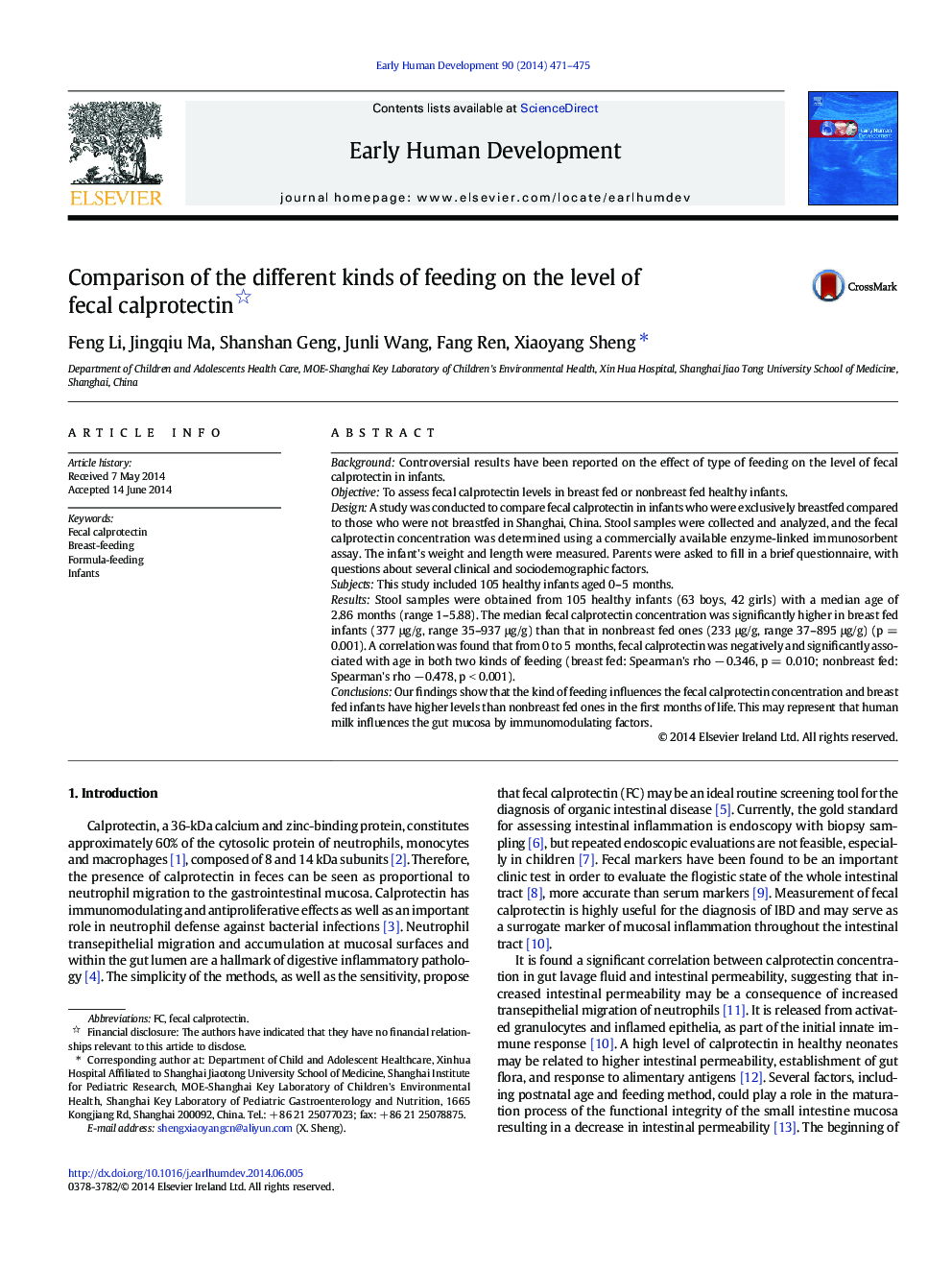| Article ID | Journal | Published Year | Pages | File Type |
|---|---|---|---|---|
| 3916510 | Early Human Development | 2014 | 5 Pages |
•The effect of type of feeding on the level of fecal calprotectin was controversial.•Breast fed infants have higher levels than nonbreast fed ones in our study.•Fecal calprotectin was negatively and significantly associated with age in infants.
BackgroundControversial results have been reported on the effect of type of feeding on the level of fecal calprotectin in infants.ObjectiveTo assess fecal calprotectin levels in breast fed or nonbreast fed healthy infants.DesignA study was conducted to compare fecal calprotectin in infants who were exclusively breastfed compared to those who were not breastfed in Shanghai, China. Stool samples were collected and analyzed, and the fecal calprotectin concentration was determined using a commercially available enzyme-linked immunosorbent assay. The infant's weight and length were measured. Parents were asked to fill in a brief questionnaire, with questions about several clinical and sociodemographic factors.SubjectsThis study included 105 healthy infants aged 0–5 months.ResultsStool samples were obtained from 105 healthy infants (63 boys, 42 girls) with a median age of 2.86 months (range 1–5.88). The median fecal calprotectin concentration was significantly higher in breast fed infants (377 μg/g, range 35–937 μg/g) than that in nonbreast fed ones (233 μg/g, range 37–895 μg/g) (p = 0.001). A correlation was found that from 0 to 5 months, fecal calprotectin was negatively and significantly associated with age in both two kinds of feeding (breast fed: Spearman's rho − 0.346, p = 0.010; nonbreast fed: Spearman's rho − 0.478, p < 0.001).ConclusionsOur findings show that the kind of feeding influences the fecal calprotectin concentration and breast fed infants have higher levels than nonbreast fed ones in the first months of life. This may represent that human milk influences the gut mucosa by immunomodulating factors.
